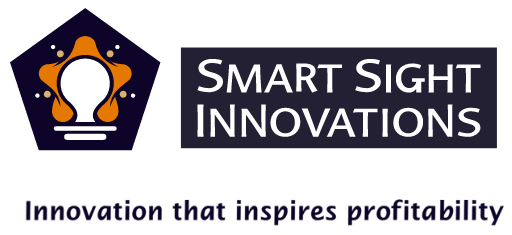
Artificial intelligence has undergone a remarkable transformation, evolving from early rule-based systems to today’s advanced large language models (LLMs). Early AI models were limited in scope, excelling in specific tasks like text-based interactions and chess.
The breakthrough came with deep learning and transformer architectures, leading to the rise of GPT-3 capable of generating human-like text. This was followed by GPT-4, Gemini, and Llama, bringing multimodal reasoning, longer context understanding, and improved efficiency.
Among these power players, Alibaba has emerged as a formidable contender with the release of Qwen 2.5 Max. This cutting-edge AI model is not just a testament to Alibaba’s technical prowess but a strategic move that is shaking up the global AI landscape. From setting new performance benchmarks to democratizing AI capabilities, Qwen 2.5 Max is positioning itself as a game-changer in the AI arms race, challenging competitors like OpenAI.
How to Access Qwen 2.5 Max?

Accessing Qwen 2.5 Max involves a few specific steps, as it is designed for more advanced and enterprise-level applications. First, users typically need to access Alibaba’s Qwen Chat platform, where Qwen 2.5 Max is integrated. This may require a business or enterprise account to unlock the full capabilities of the model. Once logged in, users can select Qwen 2.5 Max from the available options, if it is listed.
For those requiring deeper integration, contacting Alibaba’s enterprise services is recommended to set up the necessary infrastructure. Ensure your system meets the required specifications for optimal performance, especially if utilizing features like image and audio processing.
Clear and concise inputs are crucial for effective interaction with the AI model. Always refer to Alibaba’s official documentation or support channels for the most current information on accessing and utilizing Qwen 2.5 Max.
Beating the Benchmarks: Qwen 2.5 Max’s Competitive Edge

Qwen 2.5 Max has not only matched but surpassed many flagship models in critical performance areas. In the LiveCodeBench benchmark, it scored 38.7, rivalling Claude 3.5 Sonnet and outpacing DeepSeek V3. Such results highlight its exceptional coding ability, while its superior handling of multimodal inputs (like images and audio) makes it a strong contender across diverse AI applications.
Furthermore, its natural language processing (NLP) capabilities rank among the best, demonstrating human-level comprehension, summarization, and contextual understanding. For businesses, this translates into more accurate chatbots, smarter customer service agents, and highly personalized content generation.
Can Qwen 2.5 Max Help Create a Blog Post, Web App, and More?

Yes! Qwen 2.5 Max is a versatile AI model that can streamline content creation, app development, and even multimedia generation. For bloggers, it can draft well-structured, SEO-optimized articles, generate engaging headlines, and refine content for better readability.
For writers and marketers, Qwen 2.5 Max can generate high-quality blog posts, product descriptions, and social media content. It understands complex topics, conducts research, and structures articles with SEO best practices in mind — optimizing headers, suggesting keywords, and even tailoring content to match audience intent. This drastically reduces content production time while enhancing overall quality.
If you’re a developer, Qwen 2.5 Max’s advanced coding capabilities shine. It can write, debug, and optimize code across various programming languages, assist in building web apps, and even suggest more efficient algorithms. Its performance in benchmarks like LiveCodeBench demonstrates its ability to handle complex coding challenges, making it a reliable coding assistant for building dynamic websites or even full-stack applications.
Whether you’re crafting an engaging blog, prototyping a sleek web app, or brainstorming creative assets, Qwen 2.5 Max provides an all-in-one solution. It lowers barriers to entry for solo creators while supercharging teams with faster, smarter outputs. If you’re ready to turn your ideas into reality, this AI model might just be your new secret weapon.
Can Qwen 2.5 Max Help Handle Multimodal Inputs Like Images and Audio?

Yes, Qwen 2.5-Max is designed to process multimodal inputs, including text, images, and audio, enabling it to interpret and generate content across these formats.
-
Image Processing
The model incorporates a vision encoder to handle visual data, allowing it to analyze and generate content related to images. This capability supports applications such as image captioning, visual question answering, and image-based content generation. The model’s architecture facilitates a deep understanding of visual elements, enabling it to provide detailed descriptions and insights based on image inputs.
-
Audio Processing
For audio inputs, Qwen 2.5-Max utilizes specialized audio processing components capable of handling various audio formats, including human speech, natural sounds, and music. This functionality enables tasks such as speech recognition, audio classification, and the generation of audio content. The model’s design ensures efficient processing of audio data, allowing for accurate transcription and analysis of audio inputs.
-
Unified Multimodal Understanding
By integrating these capabilities, Qwen 2.5-Max achieves a unified understanding of multimodal content, allowing it to seamlessly process and generate responses that combine text, visual, and auditory information. This integration enhances the model’s versatility, making it suitable for a wide range of applications that require simultaneous processing of different data types.
The Artifacts Section in Qwen 2.5 Max

In Qwen 2.5-Max, artifacts refers to specialized outputs such as JSON data structures or code snippets that the model can generate during interactions. These artifacts enhance the user experience by providing structured and actionable information tailored to specific tasks. This capability is particularly beneficial for developers and data professionals who require precise and formatted outputs for their projects.
To explore and utilize these artifact features, users can interact with Qwen 2.5-Max through the Qwen Chat platform. This interface allows for direct engagement with the model, enabling users to generate artifacts, perform searches, and more, thereby experiencing the model’s capabilities firsthand.
How Does Qwen 2.5-Max’s Architecture Contribute to Its Efficiency and Performance?

Qwen 2.5-Max leverages a Mixture-of-Experts (MoE) architecture, which significantly enhances its efficiency and performance. In this design, only a subset of specialized “experts” is activated for each task, allowing the model to allocate computational resources more effectively. This targeted activation reduces unnecessary processing, leading to faster inference times and improved scalability.
Beyond its architectural design, Qwen 2.5-Max undergoes two critical post-training processes to further enhance its performance:
-
Supervised Fine-Tuning (SFT)
This process refines the model’s responses based on curated datasets with known correct answers, improving accuracy.
-
Reinforcement Learning from Human Feedback (RLHF)
Here, human evaluators provide feedback on the model’s outputs, allowing it to learn from real-world interactions and continually improve.
These combined strategies enable Qwen 2.5-Max to deliver high-quality outputs efficiently, making it a robust tool for complex language tasks.
How Does Qwen 2.5-Max Handle Real-Time Data Processing?

Qwen 2.5-Max is designed to handle real-time data processing efficiently, enabling immediate analysis and response to incoming data streams. This capability is particularly beneficial for applications requiring prompt insights and actions, such as live data analytics, real-time monitoring, and interactive AI services.
The model’s architecture is optimized for swift data processing, ensuring that it can manage continuous data inputs without significant latency. This efficiency is crucial for maintaining the performance of systems that rely on real-time data, allowing for timely decision-making and responsiveness.
By integrating real-time data processing capabilities, Qwen 2.5-Max enhances its utility across various sectors, including finance, healthcare, and e-commerce, where up-to-the-minute data analysis is essential. This feature ensures that users receive the most current information, supporting dynamic and informed interactions.
Qwen 2.5-Max’s real-time data processing capabilities make it a valuable tool for applications that demand immediate data analysis and response, thereby enhancing operational efficiency and decision-making processes.
The rise of Qwen 2.5 Max marks a pivotal moment in the global AI race. By blending innovation with accessibility, Alibaba is not just competing with tech giants but redefining the possibilities of what AI can achieve. As the model gains traction, it will undoubtedly inspire new applications, reshape industries, and catalyze the next wave of AI-powered transformation worldwide.














